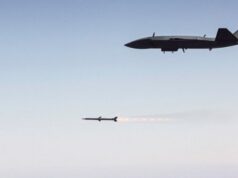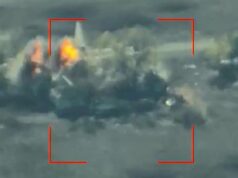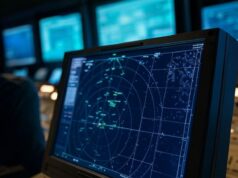The United States is preparing to deploy strategic bombers to Europe as part of the latest Bomber Task Force-Europe mission, a long-planned effort aimed at boosting security and reinforcing partnerships within the NATO alliance, say the U.S. Air Force
The deployment, announced on November 1, 2024, by U.S. Air Forces in Europe and Air Forces Africa (USAFE-AFAFRICA), is set to commence in the coming days.
The U.S. bombers will transit from the continental United States to the U.S. European Command’s area of responsibility, following a pre-filed flight plan. Diplomatic clearances have been secured to allow the bombers to pass through international airspace and sovereign nations’ airspace as necessary.
This strategic deployment underlines the coordination and cooperation required for cross-border military operations and highlights the U.S.’s commitment to ensuring all protocols are adhered to for safe transit.
Once in Europe, U.S. bomber aircrews will conduct training exercises alongside NATO Allies and partner nations over the course of several weeks. These joint exercises are designed to enhance interoperability among allied forces, ensuring readiness and capability to respond to any potential security challenges in the region.
The Bomber Task Force-Europe deployments,s ay the U.S. Air Force, underscore the United States’ dedication to maintaining global stability and reinforcing its alliances across Europe. By working in concert with NATO partners, the U.S. say it aims to enhance collective security measures and contribute to the defence of Europe amidst evolving global threats.
Past rotations have included B-52 Stratofortress and B-1B Lancer bombers, which have flown from bases in the continental U.S. to temporary operating locations across Europe, including RAF Fairford in the UK.
During these rotations, U.S. bombers have engaged in a range of training exercises alongside NATO allies, such as air-to-ground strike simulations, maritime support operations, and electronic warfare drills. Missions frequently involve close coordination with NATO fighter jets, naval vessels, and ground forces.
These deployments not only improve interoperability among NATO forces but also serve as a clear signal of deterrence. By showcasing the capability to project long-range firepower across Europe, the U.S. makes clear its commitment to defending shared interests and maintaining stability throughout the region.
At the UK Defence Journal, we aim to deliver accurate and timely news on defence matters. We rely on the support of readers like you to maintain our independence and high-quality journalism. Please consider making a one-off donation to help us continue our work. Click here to donate. Thank you for your support!














Buffs landed at Fairfield yesterday apparently…..
The ultimate minority is the individual.
The minority want war.
The majority want peace.
We are all zeroes on the Kardashev scale.
Human stupidity knows no bounds.
Sadly ! All the above are true. ♥️✌️